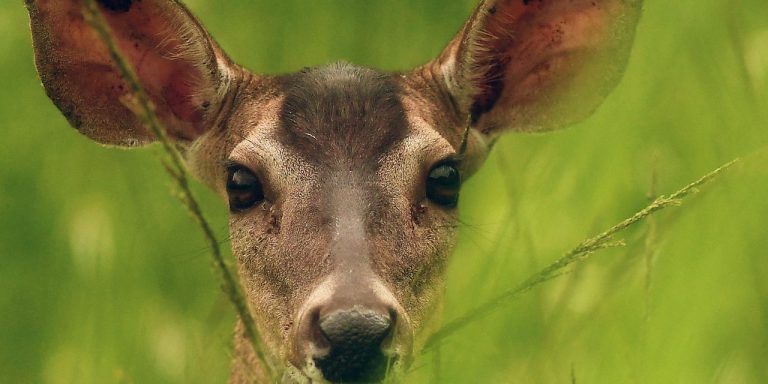The COVID-19 virus is evolving in white-tailed deer at triple the rate it evolves in humans–and future changes could have serious consequences for people as well as livestock, according to a study published Monday in the journal Nature Communications.
Researchers collected more than 1,500 nasal swabs from white-tailed deer across Ohio between late 2021 and early 2022 to examine the COVID infection rate, spread and evolution of the virus. More than 10% of the samples collected were positive for COVID, with most of the sequenced deer viruses belonging to the delta variant that was widely circulating in humans at the time, according to the study led by researchers at Ohio State University, National Institutes of Health and St. Jude Children’s Research Hospital in Memphis. But some of the deer also had alpha variants that had been circulating in humans six months earlier, the researchers found.
COVID was introduced by humans into the Ohio white-tailed deer population more than 30 times during the period studied, the researchers found. Although transmission between species has generally been considered rare, “this wasn’t a huge sampling, and we’re able to document 30 spillovers,” Andrew Bowman, associate professor of preventive medicine at Ohio State University and co-author of the study, said in a statement. There’s growing evidence that humans can also get the virus from deer, he said, as COVID “seems to be moving between people and animals quite easily.” Data suggest that vaccination is likely to help protect people against severe disease if the virus spills back from animals to humans, according to the study.
The continued spread of the virus in deer, humans and other hosts could open up new avenues for the virus’s evolution, according to the study. The flu “serves as a reminder of how pathogens that jump from humans to animals can establish reservoirs with different evolutionary trajectories that can ultimately have consequential effects on animal and human health,” the study said.
The new research was published as epidemiologists are closely watching a new COVID variant, BA.2.86, which has a large number of mutations in the spike protein and has been detected in Denmark, South Africa, Israel, the U.S. and the United Kingdom. It is too soon to know whether that variant causes more severe illness than previous variants, according to the Centers for Disease Control and Prevention.
Scientists are closely studying how the virus evolves as new variants that may transmit more efficiently or escape their hosts’ immune response have repeatedly changed the course of the pandemic.
After COVID was introduced from humans to deer during the period studied in Ohio, subsequent transmission among deer persisted for two to eight months and spread across hundreds of kilometers, according to the study.
Transmission of mutated COVID variants from animals back to humans has previously been seen in hamsters and mink, the study said.
Updated COVID vaccines expected to be launched in the coming weeks were designed to protect against the XBB Omicron subvariants. Pfizer Inc.
PFE,
Moderna Inc.
MRNA,
and Novavax Inc.
NVAX,
have all said their updated shots are effective against Eris and some other variants now circulating widely.
Read the full article here









